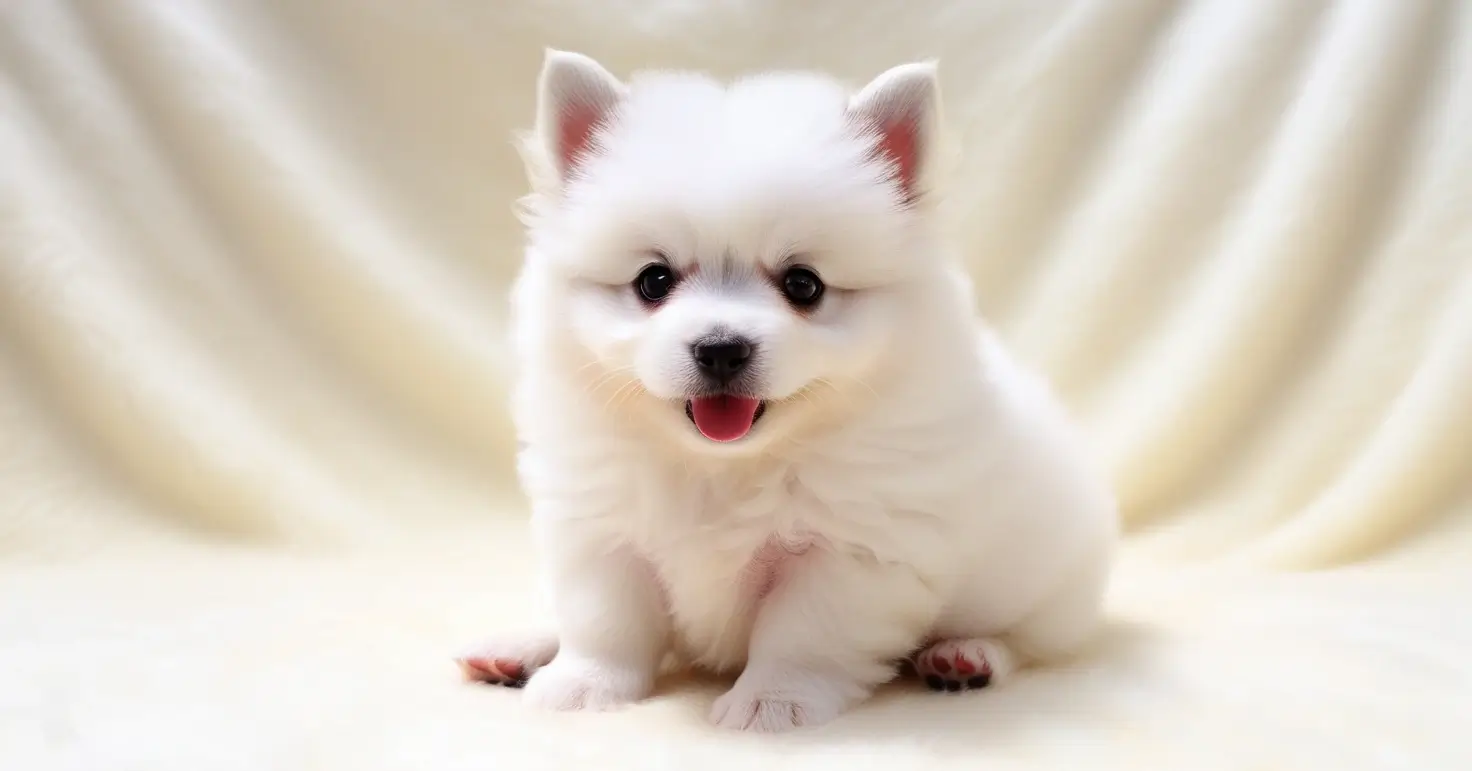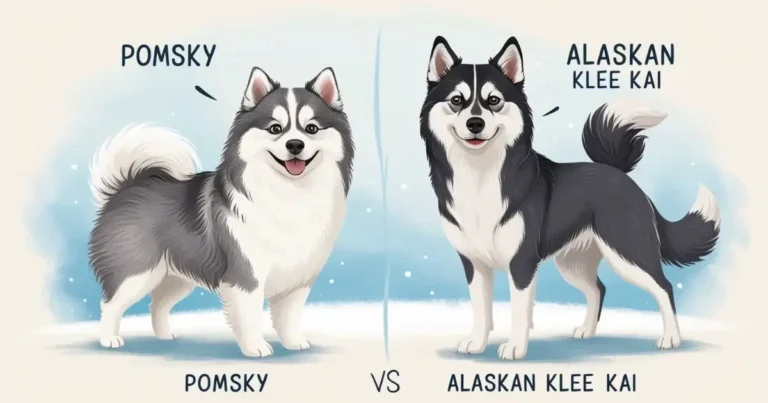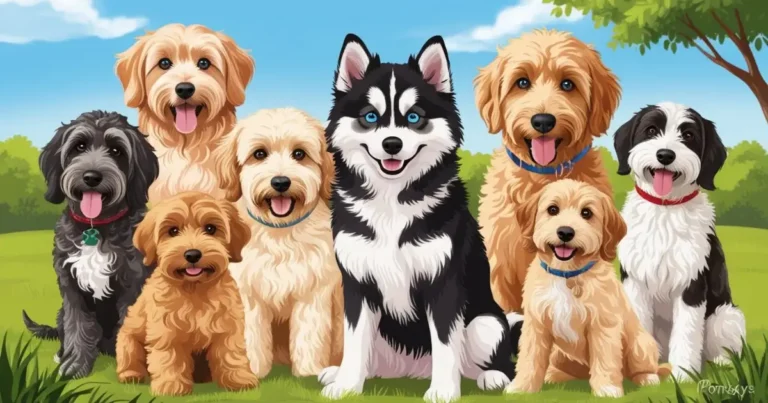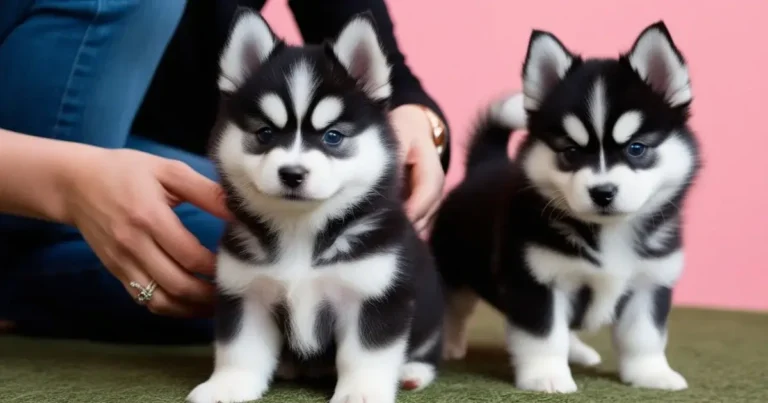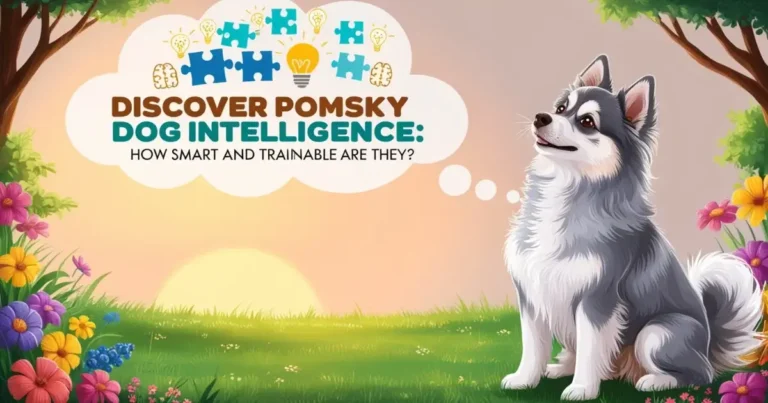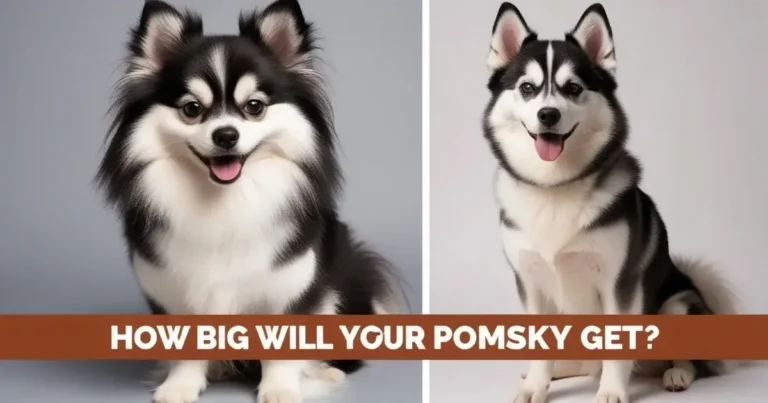Adorable White Pomsky Puppy – A Complete Guide
White Pomsky puppies are one of the most adorable breeds that pet lovers can have. These playful and intelligent dogs are a cross between a Siberian Husky and a Pomeranian. With their cute looks and small size, Pomskies have become very popular. If you’re thinking about bringing a white Pomsky puppy into your home, this guide will help you understand everything you need to know.
Table of Contents
White Pomsky Coat Colors and Patterns
White Pomsky puppies come in different coat colors. Their appearance is often influenced by their Husky and Pomeranian parents.
Common Coat Colors in White Pomskies
- White and Gray Pomsky: A mix of white and gray fur.
- White and Black Pomsky: White with black patches, giving them a unique look.
- Pure White Pomsky: Some puppies have a pure white coat, which is very rare and admired.
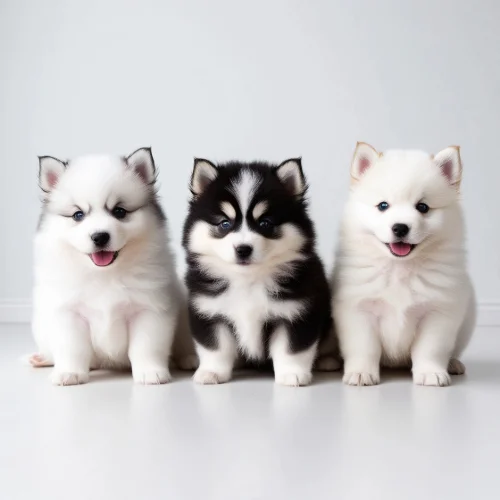
Markings in White Pomskies
Pomskies can have different markings such as:
- Sable points
- Tuxedo patterns
- Brindle patterns
These markings add to their beauty and make them look similar to their Husky ancestors.
Influence of Pomsky Generations on Coat Color
Different generations like F1, F2, and F3 Pomskies may show slight differences in coat colors and patterns due to their mixed Husky and Pomeranian genes.
White Pomsky Puppy Size and Growth Expectations
A white Pomsky puppy is usually small, but their size depends on their parents. Generally, Pomskies are a mix of the Pomeranian’s tiny size and the Husky’s larger frame.
Factors Influencing Pomsky Size
- The size of the parent breeds plays a major role in determining how big a Pomsky will get.
- The percentage of Husky genes often determines the height and weight.
Full Grown Pomsky Size
When fully grown, a Pomsky puppy white may weigh between 4kg to 16kg, depending on whether they are F1, F2, or F3. The size can also depend on the breeder’s choices.
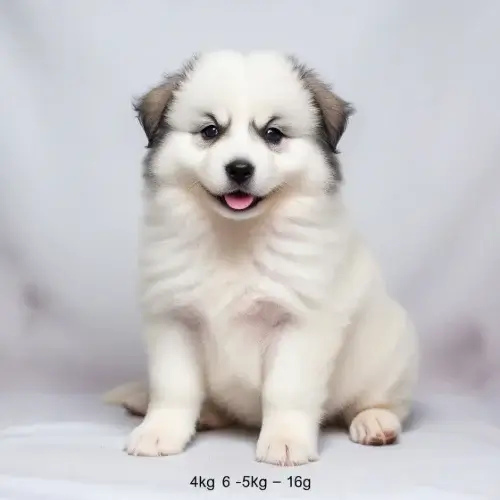
White Pomsky Eye Colors and Their Significance
Pomskies are famous for their beautiful eyes, just like Huskies.
Common Eye Colors in White Pomskies
- Blue Eyes: These are the most popular and eye-catching.
- Brown Eyes: Some Pomskies may inherit brown eyes.
- Heterochromia: Some white Pomskies have one blue eye and one brown eye.
Husky vs. Spitz Eye Color Inheritance
Pomskies may inherit blue eyes from their Husky lineage and brown eyes from their Spitz ancestors. This unique eye color combination adds to their charm.
White Pomsky Grooming Needs
White Pomsky puppies need regular grooming to maintain their soft coats.
Coat Length: Standard, Fluffy, and Wooly
Pomskies have different types of coats:
- Standard: A basic short coat.
- Fluffy: A longer and thicker coat that needs more attention.
- Wooly: This coat is dense and requires regular brushing.
Grooming Frequency for White Pomsky Puppies
A white Pomsky puppy sheds a lot, especially during the shedding season. It is important to brush them daily to avoid matting.
Common Temperament and Behavior of White Pomskies
Pomskies are known for their energetic and loving nature.
Pomsky Behavior Traits
- They are playful and love running around the house.
- Pomskies are also highly intelligent and easy to train.
Interaction with Other Pets and Families
Pomskies are family-friendly dogs. They are great with kids and get along well with other pets. Early socialization will help them adapt to new environments.
Purchasing a White Pomsky Puppy: What You Need to Know
When buying a white Pomsky puppy, you should be careful about where you buy it from.
- Reputable Breeders for White Pomskies: Always choose a breeder who provides full health reports for the puppy. The breeder should also be transparent about the Pomsky white’s lineage and expected size.
- Price Range for White Pomsky Puppies: White Pomsky puppies are usually expensive. Pure white Pomskies or those with unique markings can cost more. On average, their prices range from $1000 to $5000 depending on their coat, eye color, and lineage.
Health Considerations for White Pomsky Puppies
Like all dogs, Pomskies may face certain health challenges.
Common Health Issues
Pomskies may inherit health issues from both Huskies and Pomeranians, such as:
- Eye conditions like cataracts
- Hip dysplasia
- Skin allergies
Regular Veterinary Care
Make sure to take your white Pomsky puppy to the vet regularly. Early vaccinations and routine check-ups are necessary to keep them healthy.
Conclusion
A white Pomsky puppy is a perfect choice if you’re looking for an adorable, intelligent, and loyal companion. Their stunning coat colors, beautiful eyes, and playful nature make them a joy to have at home. Whether you’re living in a big house or a small apartment, Pomskies adapt well to different environments and bring happiness to their owners.
FAQs
What is the difference between a white Pomsky and a white-gray Pomsky?
A white Pomsky has a pure white coat, while a white-gray Pomsky features a combination of white and soft gray hues. These color variations are due to their Husky and Pomeranian lineage.
Can white Pomsky puppies have blue eyes?
Yes, many white Pomsky puppies inherit blue eyes from their Husky parent. This is a highly desirable trait in the breed, but some may also have brown or even one blue and one brown eye (heterochromia).
How much does a black-and-white Pomsky cost compared to a white Pomsky?
A black-and-white Pomsky and a white Pomsky are priced similarly, typically ranging from $2,000 to $5,000. However, pure white Pomskies may be on the higher end of this range due to their rarity.
Are white Pomsky puppies easy to train compared to other colors?
The coat color, whether white Pomsky or black Pomsky puppy, doesn’t affect trainability. What matters more is their inherited intelligence from the Husky and Pomeranian parents, which makes them relatively easy to train with positive reinforcement.
